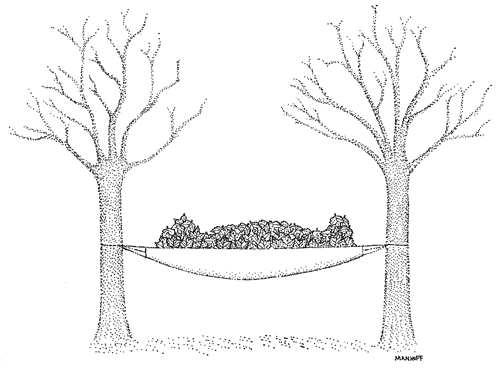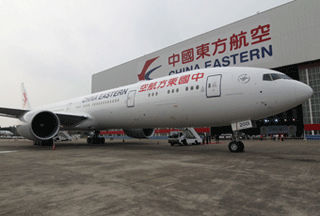| 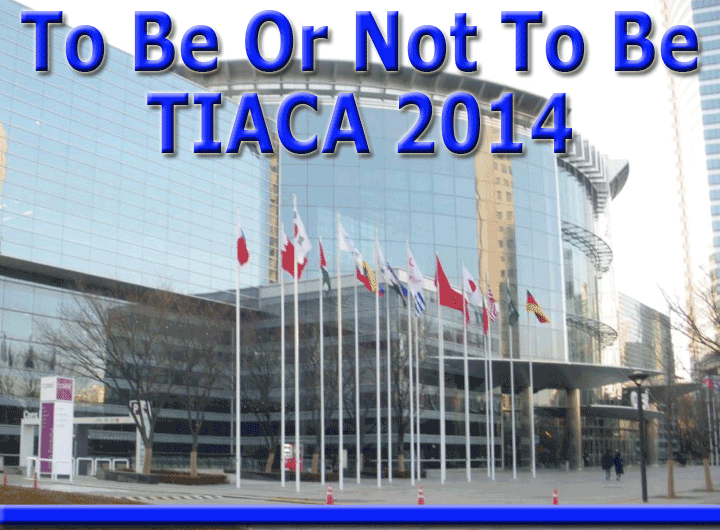
"To be,
or not to be..." is the opening phrase of a soliloquy in the "Nunnery
Scene" of William Shakespeare's Hamlet, in which Prince Hamlet contemplates
death and suicide.
He bemoans the pains and unfairness of life—but acknowledges the
alternative might be still worse.
Fast-forward to next week as The International
Air Cargo Association (TIACA) is conducting the final, multi-based, grand
air cargo event of 2014 in Seoul, Korea, from October 7-9.
But our sources tell us all may not be well in
TIACA Land.
ACF Lite
One source estimates that TIACA sold approximately
$1.5 million in exhibition space for Korea and approximately $1.4 million
was not sold from the original floor plan.
“That's a catastrophic scenario,”
the source said “and unprecedented in the over 50-year history of
the ACF.
“There has been a 50 percent drop in exhibitors.
“No trade show in any industry can survive
that,” the source said.
Other Factors
No doubt other circumstances played into some
of the no-shows.
Take the withdrawal of India’s GMR/Delhi
International Airport from 27th Air Cargo Forum and Exposition at Seoul.
Usually, as in past events, GMR (the promoters
of Delhi International Airport and Hyderabad International Airport) team
up and purchase several booths.
“It is a joint effort by GMR, the Celebi
Delhi Cargo Terminal, and the Cargo Service Center (CSC),” Sanjiv
Edwards, head of Cargo at Delhi International Airport, who also serves
on TIACA’s Board of Directors, told FlyingTypers.
“Both Celebi and Cargo Service Center have
seen changes in the top management,” Mr. Edwards said.
“As a result, we were not able to get together
and decide about the participation in the Exposition,” he said.
Sanjiv Edwards went on to say that the Delhi
Airport withdrawal from the Expo should not be seen as due to any other
factors than the one mentioned.
"Now, everything at TIACA is going well
and we are doing a lot of positive things," he said, adding that
he will be “attending the show and hoped to play an active role
at the Board meetings and the workshop.”
People with knowledge about the participation
of GMR/Delhi International Airport are not surprised.
“It was all a matter of getting all the
participants together for the exhibition in a short time,” a source
close to the situation confirmed.
AGM Hangover?
Although this may not be connected, we recall
a conversation earlier this year whilst attending the TIACA AGM in Istanbul
honoring the great Jacques Ancher. A high-ranking member of Celebi, which
co-hosted the opening cocktail hour event complaining bitterly at “the
puny turnout and the cost of sponsoring the event.”
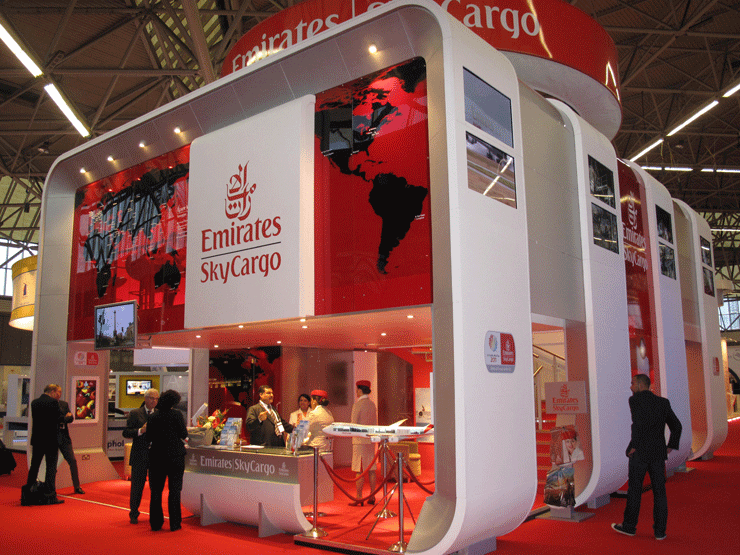
On The line Backing ACF . . . Emirates SkyCargo
shells out over USD $80,000 to place its multi-storied stand at ACF
and (according to sources) more than six times that amount to move
and staff the double decker during the show. |
Adding Things
Up
We did a bit of quick figuring and a sampling
of some of the companies who are appearing at TIACA 2014 Incheon.
Based on published rates for space, FT
came up with the following:
WFS and Airbus have 8 booths ($44,320), EK has
15 booths ($83,100), and Changi Airport has 10 booths ($55,400) among
others.
Of course, the space cost is only a fraction
of the cost to exhibit.
These large booths require transportation, storage,
days of labor, as well as staff that must be flown in, housed, and fed.
A source told FT the
cost to Emirates, for example, can run over six times the cost of the
floor space.
Past
Is Prologue
We have been thinking about The ACF 2014 event
long and hard at FlyingTypers, ever since TIACA kicked out its
long serving and universally respected Secretary General Daniel Fernandez—a
move that came on the heels of awarding Daniel another two-year term,
which would have added to his 14 years of service to the organization.
The Fernandez ouster in August 2013 came at a
time when some industry giants were professing displeasure with the way
TIACA was operating.
The voices of dissent included, notably, air
cargo and transportation guru Issa Baluch, who abruptly quit the TIACA
Board in fall 2013 in protest of the operations.
Baluch put things on the line, saying about TIACA:
“I only hope the underlying reasons of
my departure will help this organization move forward.
“One of the commentators stated that I
should have not come out in public with dirty linen about TIACA.
“Sorry, I spent the last 5 years working
from within and it appeared I was making progress.
“In actual fact, the contributions I made
seemed fully acceptable but when it came to implementation, it was entirely
something else.
“I gave this process the benefit of the
doubt for many years until it reached a point when I could not take it
anymore.
“A number of current board members are
my personal friends and fully agree with me. I respect their positions
that they decided to keep quiet and not come out in public. Everyone has
their own reasons and while I do not like what I see, I still respect
their position.
“One thing I am very certain about is that
my departure will continue to have an impact since the last chapter has
yet to be written,” Issa Baluch said.
Voice Of
An Attendee
So what about attending TIACA ACF Incheon?
We talked to Patrick Murray, head of Dubai-based
Calogi, the IT company evident at so many global cargo conferences.
Calogi will not have a stand at ICN, but dnata
will be in evidence as will Patrick, who is attending ICN ACF as a delegate.
“I believe the choice of venues is governed
by a mixture of sponsorship and trying to position the conference in a
different area every two years, thus we found ourselves in Amsterdam in
2010, Atlanta in 2012, and Seoul in 2014,” Patrick said.
“For me, ACF has always been a great place
to network.
“The major issue I have is that the FIATA
World Congress takes place the following week, another ‘must attend’
for Calogi, which effectively means two weeks out of the office.
“Meanwhile, I’m looking forward to
the Seoul conference and I wish Oliver Evans and team every success with
the event.”
Check Your Calendar
Our take on ICN is that folks who do not have
a lot of booked appointments risk trying to squeeze results out of a possible
low turnout.
At the same time, even though we are not members,
in addition to our no-holds-barred reportage we have tried to shine a
spotlight on TIACA to drum up some interest in the event, and have created
a forum for TIACA to make the case for attending ACF.
We may have helped in that regard, but wonder
if that will be enough, because as yet neither FedEx, UPS, or for that
matter Lufthansa Cargo will have a display at the event.
Even TIACA Chairman Oliver Evans’ own airline,
SWISS World Cargo, has not purchased a booth.
At last booth count, 50 percent percent of TIACA’s
board of directors had not thought enough of Korea to support their own
show there.
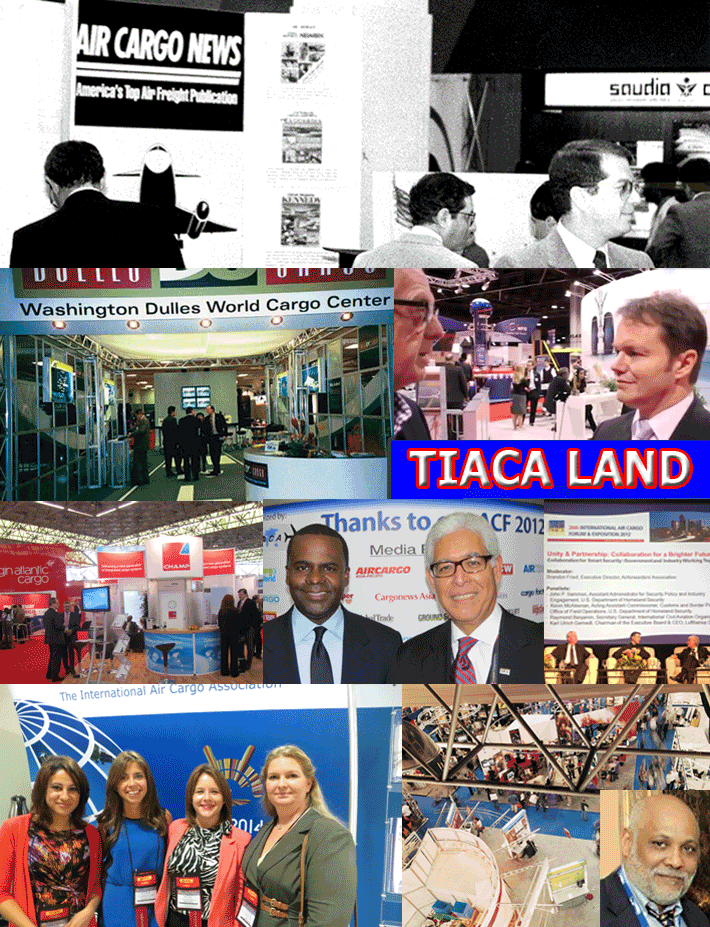 |
Building
Attendance
FlyingTypers was told
that TIACA has allowed some forwarders to have booths for free or in trade—but
no cash to TIACA—in order to fill space.
That may be good for some exhibitors at the ICN
ACF.
Even some forwarders, however they arrive in
Korea at ICN, would be better than TIACA managed at the ACF 2012 Atlanta,
where there were but a few in attendance.
Worse still, TIACA ACF in Atlanta was conducted
at a venue that was also hosting the Council Of Supply Chain Management
Professionals (CSCMP), inside an adjacent hall to TIACA ACF.
Yet there was little effort (or success) in bringing
this group to the ACF in Atlanta.
Attendees sat for three days, looking at each
other across the way through plate glass windows.
Now in 2014, we are also wondering what happened
to the Air Logistics Network (ALN)?
ALN was established by TIACA in 2010 to—among
other things—develop a platform for forwarders, shippers, and airlines
at the ACF.
Our impression is that ALN, a “LinkedIn”
type service for air cargo, had some success in Amsterdam and Atlanta
as forwarders and others were provided a special ALN platform and venue
for networking.
Now ALN has become a “ghost” to many.
Nothing is written or heard about it.
The fate of ALN (to us at least) raises the question
of where the focus of TIACA’s leadership lies.
Industry Needs TIACA
So as ICN readies, we count up booths sold on
TIACA’s website and the numbers still appear grim as compared to
the very profitable ACF show in Atlanta.
The industry needs a healthy TIACA and TIACA
needs the revenue from its events to survive.
We all want to be good sports and do what we
can to support industry events that help build a better air cargo business.
But personal views aside, as the years pass and
global communication occurs instantly, we can all agree that we must work
smarter.
We certainly will afford TIACA 2014 proper regional
coverage whilst hoping that the good lord will allow all of us to live
long enough to attend TIACA’s next event at CDG in two years.
Geoffrey/Sabiha
|
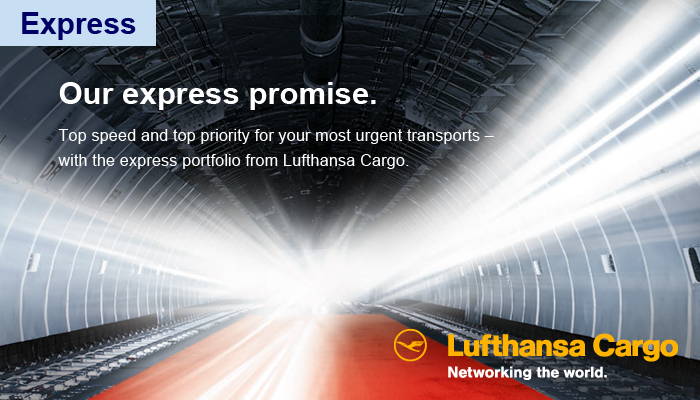




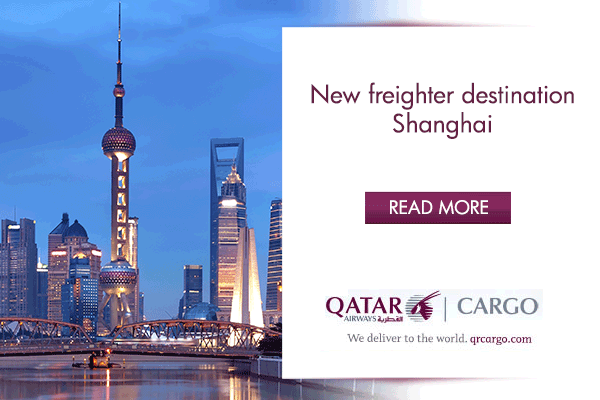

 Tell
the industry about a female at any level that you know, or have known about
in air cargo. Write a short essay about what that woman means to air cargo. Pictures
are welcome.
Tell
the industry about a female at any level that you know, or have known about
in air cargo. Write a short essay about what that woman means to air cargo. Pictures
are welcome.